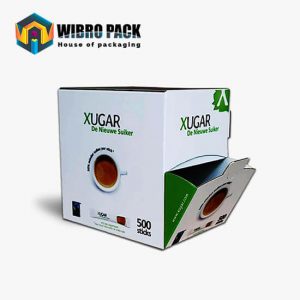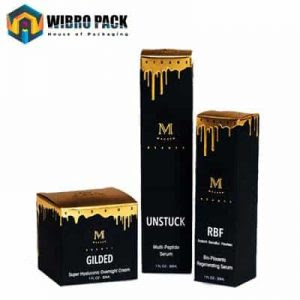All you need to know about food Packaging
If you want your restaurant to continue generating revenue, you need to know how to package your food the right way. Here's everything you need to know about food packaging.
Importance of food packaging:
1. Food Protection:
Food packaging is important to protect the
food during transportation and distribution and to maintain the condition of
the food while it is being transported from the restaurant to the customer..
2. Food Safety:
Food packaging protects food from any
contamination when delivered to customers and ensures food safety to eliminate
or reduce food return complaints and risks, especially at a time when the
Corona virus threatens people's lives. Returning a product has been proven to
destroy brand credibility, reduce product sales, or even lead to a lawsuit.
Food contamination can occur at any time in the supply chain, make sure you
always serve healthy and safe meals.
3. Food freshness:
Proper packaging can preserve the
freshness, appearance, taste, shelf life and quality of food, and make the meal
look fresher and more attractive. This allows customers to keep a meal in the
house for a period of time before eating it.
Moreover, it is important to maintain the
temperature of the food, so the dishes that must be eaten cold, for example,
must reach the customer cold. There is nothing worse than ordering ice cream,
milkshakes or iced coffee and receiving it warm.
4. More sales:
Attractive packaging encourages customers
to repeat purchase, which increases sales.
5. Promote your brand and
raise its value:
Packaging is the point of contact for the
brand with the customer and is an essential part of marketing and allows you to
communicate food information directly with the customer. It also allows you to
communicate with customers through the clever use of colors, design and words.
Plus, the packaging communicates your restaurant's values to your customers. For example, if you value sustainability and the environment, consider using biodegradable packaging.
The main factors for choosing
the right packaging in your restaurant:
1. Choosing the right
packaging materials at the best prices:
Choosing the right materials is the first
step in choosing packaging for your restaurant. You need to choose materials
that allow for maximum freshness, keep freshness and protect the product as
well as match your brand's aesthetics, environmental commitments and the type
of food you serve. Choose the right food packaging material first no matter
what design you want.
Furthermore, the choice of packaging
materials depends on the food delivery needs of your restaurant such as the
distance the food will travel during delivery, how long the food will remain in
its package, as well as the temperature requirements.
After deciding what materials to use, you
can work with a packaging designer to design packaging to suit your needs.
There are a variety of materials to
manufacture food packaging including plastic, cardboard, styrofoam, paperboard,
paper bags, biodegradable alternatives and sustainable packaging.
Each type of this material has
its pros and cons as follows:
Styrofoam:
Styrofoam is a prominent choice for
inspiring hot and store foods to help stable and control temperature..
Plastic:
The plastic is sturdy, leak-proof and
protects food. It is probably the most widely used packing material because it
is very cheap, durable and easy to transport.
However, plastic is not environmentally
friendly because it is not biodegradable, while some plastics can leach toxic
substances into your food.
Cardboard:
Cardboard is biodegradable, a sustainable
choice, easy to print on, cost effective, and sturdy when folded properly.
However, wet foods can melt it and it is not a very good temperature insulator.
However, many restaurants offer pizza
delivery or custom cake boxes packaged in corrugated
cardboard boxes, which provide thermal insulation and temperature regulation.
To reduce the amount of heat released, the boxes can be closed tightly. While
to prevent condensation and keep the pizza from sweating, the boxes have small
holes on the side, which allow some air to escape.
Sustainable packing:
Sustainable packaging alternatives are much
better for the environment, however, they are often more expensive. An example
might be compostable containers made of bagasse, a by-product that remains
after processing sugarcane. These containers can also be inserted into the oven
to heat meals.
2. Trends in Packaging:
a. sustainable packaging:
Customers are not only looking for
sustainable food options, they also demand sustainable packaging. With the
growing awareness of consumers, it is important to look for food packaging
materials that are not harmful to the environment.
Plastic and anything that cannot be recycled is no longer an option for people who support the environment. Prioritize recyclable, reusable, biodegradable, eco-friendly, and even edible packaging that will add more value to your brand spirit.
Packaging with the least amount of materials:
Simple packaging is packaging free from any
unnecessary materials and the messy designs are simpler and more elegant. Where
it refers to reducing the mess of the packaging process. From the design and
appearance to the packaging, everything brings a sense of simplicity to the
food.
Plain packaging is cost-effective, and
often environmentally friendly. It helps you better communicate the core
message of your brand and increase awareness with your customers, as there are
no additional design elements that create clutter and clutter the message.
Consider including relevant information and graphics on the packaging and use
only essential materials.
Custom packaging:
Think of custom packaging as what Coca-Cola
does with its pre-labeled cans. Just as providing a customized customer
experience is important within a restaurant, personalization also offers many
benefits when applied in packaging. It helps you build stronger and more
emotional connections with your customers and gives you free word-of-mouth
marketing where customers feel special when they receive a personalized
personalized note every time they order food.
For example, you can leave space on the
packaging and then write a small note that reads “Made with love for “customer
name”, stay safe.”
Convenient packaging:
Customers are looking to comfortably eat at home without having to cook or prepare dishes. So, consider offering a lightweight, portable and resealable package, where they can simply eat as much as they want or close the package and eat later.
3. Creating Brand Awareness:
The packaging is a key identity tool that
tangibly represents your brand's personality. It helps draw customers'
attention to your brand, and differentiates you from your competition.
Packaging is an ideal marketing tool as
well as an extension of your branding, so consider as example your Custom Donut Boxes brand
personality when hiring someone to design your packaging, not to mention that
you need to include your company name or logo on the packaging to keep your
brand visible to anyone who sees your packaging Encapsulation.
In general, the material should align with your brand, the design elements and information on the packaging should correctly depict your restaurant, and the packaging should communicate with customers and capture their attention.
Choose packaging that ensures that your food is protected and safe through transportation as well as looks and tastes as great as it should. While the design should be able to communicate your brand personality and be visually appealing to your customers. This will help you improve your brand image and increase sales.




Comments
Post a Comment